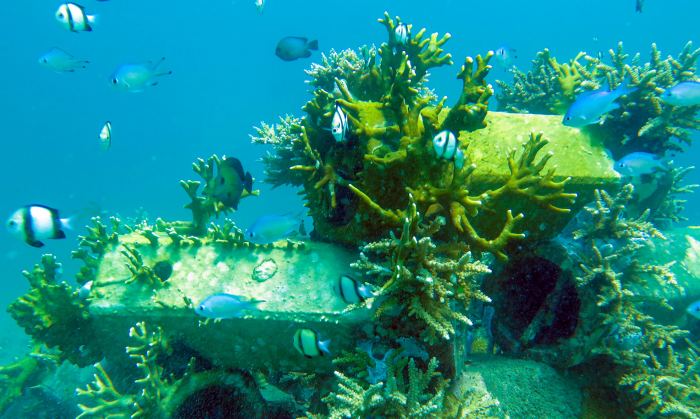Where Boskalis used to make new land by supplying sand, land is now being developed in a way that is unique by Asian standards to enlarge the island of Pulau Tekong. Singapore’s first polder is on its way!
The future polder, which will cover an area of 810 hectares, consisted mostly of water before the work began in 2018. Only some sections of the future ten-kilometer-long dike that will protect the polder were in place back then, but they needed to be upgraded for the change in reclamation method. Now, the Dutch-Japanese Boskalis-Penta Ocean Construction (POC) joint venture already completed more than half of the project as a whole. The new dike is in place and is designed with a safety standard for wave overtopping of once every 100,000 years.
Boskalis’ mega trailing suction hopper dredger Queen of the Netherlands and backhoe dredger Oceanus played an important role during that initial phase by deepening part of the 100-hectare storm water collection pond – a retention lake for excess rainwater – and POC deployed some dredging equipment as well. In addition, Boskalis’ subsidiary Cofra deployed vertical drainage equipment on the project to accelerate the consolidation of the watery clay.


Soil balance
“After the vertical drain installation, the surcharge consisting of sand, clay or rock is applied. It is left in place for about six months on average to make the underlying layer of clay strong enough,” says project director Jaap Dekker. The surcharge is then removed and applied to the next section. “So we are constantly at work with large numbers of dry earth-moving machines and continuously conducting soil investigations to check whether we are complying with the contractual requirements for the subsurface at that location. Our hydrographic- and land survey departments are crucial for this type of work. They establish a clear picture of all the soil flows and levels, and we can monitor and work towards the right overall soil balance in the polder.”
A wall of cement bentonite is being installed in the outer dike down to the hard subsurface. It serves as an additional element to limit the amount of seawater flowing into the polder. Usable dredged clay from the storm water collection pond is being used as the first protective layer on the inner side of the dike. It will be covered with soil and then sown with grass. Rock is being used as the revetment on the outer side of the dike to protect it against the seawater.
Sustainable land reclamation
Because of all the different activities following on from each other in quick succession, mutual communications and coordination of the individual schedules are crucial here. All for the timely completion of the entire Pulau Tekong project, which involved years of research with assistance from local and Dutch consultants. This makes Pulau Tekong a unique project both for Singapore and for the client, the Housing Development Board. “For this innovative project an alternative and sustainable way to reclaim land was needed. The client looked for a contractor with, amongst others, experience in dike construction and, obviously, that is one of our specialties,” says Dekker.
For this innovative project an alternative and sustainable way to reclaim land was needed
Concrete structures
However, the project is not limited to building dikes and channels and optimizing ground conditions. To retain complete control of the polder’s water system once the construction of the polder is finished, a huge number of civil-engineering structures are planned. Two major pumping stations and many other supporting infrastructures will be built and installed. These are all areas where Boskalis has a lot of expertise and experience in the Netherlands. As a result, the project team has regular consultations with colleagues working on similar projects in the Netherlands so that their expertise can be applied in Pulau Tekong.
Development
This all means that colleagues from a range of Boskalis departments are working together on
Singapore’s first polder. Dekker: “The essence of a polder is that you need pumps to take the water out of the drainage ditches so that the land stays dry. The final polder level will be constructed at 0,5 meters above chart datum (CD), and so we are constructing a drainage channel structure that allows water to circulate in the area to maintain the water quality. Where necessary, the water can then be pumped out.”
But first the polder has to be created as a whole. “Our work in Singapore was severely disrupted by the COVID-19 pandemic but, despite that setback – which of course affected the whole world – we are making good progress. The entire project team is working very hard with a daily total of about 2,000 people to build this first polder in Singapore.”
